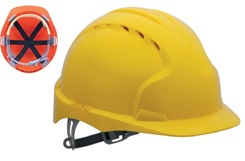Personal Protective Equipment (PPE) is often required in many industrial work environments and should be readily available for all employees at risk to use.
The Personal Protective Equipment at Work Regulations (1992) states that every employer should ensure that suitable PPE is provided for employees who may be exposed to a risk to their health or safety whilst at work. This is with the exception of where risks have been adequately controlled by other means which are equally or more effective than PPE (Health and Safety Executive).
Personal Protective Equipment should be visibly available for employees. Where it is not kept in a well-recognised area then there should be clear instructions to where on the premises they can obtain the PPE that is relevant to their needs. It is therefore ideal to have PPE lockers or cupboards where the equipment can be safely stored and accessed by all employees.
Personal protection equipment is designed to protect employees in all working environments, which means there is a large range of equipment to choose from including:
- Safety glass and goggles

- Safety helmets
- Ear defenders
- Respiratory protection
- Safety gloves
- Safety footwear
- High visibility clothing
- Disposable wear
- Fall arrest equipment
Safety helmets are one of the most common types of Personal Protective Equipment and also one of the most important. Safety helmets are designed to protect users from impacts from falling objects, bumping their head or hair entanglement. Some types of safety helmets can incorporate, or do incorporate, specially designed eye and/or hearing protection to ensure full protection of the head.
However, it’s important to remember to also protect the neck area especially when performing tasks such as welding. And furthermore to always replace damaged head protection as once damaged it is unsuitable to wear and will not perform to the required standards.